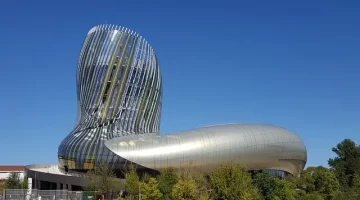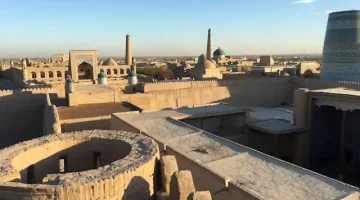Musée de la Mine
The Musee de la Mine in Saint-Étienne near Lyon in France offers a unique and dramatic visit to see working conditions in a coal mine.

There were once 200 working coal mines in Saint-Étienne, and another 100 in the surrounding area. One of the biggest was the Couriot Mine, where 2,000 miners would come each day and descend to the coal seams, some 700 meters (about 2,300 feet) underground.
The pit closed in 1973, but re-opened again in 1981 as a museum, and a tribute to the men who worked there. In 2011 it was registered as a historical monument.

And a powerful tribute it is. The buildings above ground have been left more or less as they were, the most impressive being the two vast changing rooms where 900 and 1100 miners respectively would change before and after their shifts.
One of the few alterations has been when a film company came to shoot a movie here, and left behind them the hundreds of mining outfits, hanging from the ceiling on pulleys, just as they did in reality. It’s a dramatic and eerie sight.

Further on are the miners’ lamps and helmets, and the tokens with their names on, so that everyone knew who was down the mine at any one time. There are round, square, and triangular ones, for the three different shifts which kept the pit working 24 hours a day. The tokens are real, from the last people to work in the mine when it closed for the final time in 1973, and the names show the multi-racial nature of the work: French, German, Italian, North African.

Guided Tours of the Musée de la Mine
Take one of the guided tours and you can don a helmet and take the cage down to see the reconstructed tunnels where those miners used to spend their working lives. In Saint-Étienne after the Second World War there were almost 25,000 miners in the city: one man in every six worked in the mines.

Some of the guides are ex-miners, but down there now are only cardboard cut-outs of the men, the horses, and the children who worked there with them. Different sections of the tunnels recreate different periods in mining history, in what is one of the very few mining museums in the world where you can go underground into actual mining tunnels. It’s impossible not to be moved by the experience, the strength of the museum being the simple way it shows things as they were.

Visiting the Musée de la Mine
While it is possible to visit the buildings above ground whenever the museum is open, the underground section can only be seen on a guided visit. These are conducted at regular times in French, although you still need to book ahead because of the restriction on numbers. For visits in English and other languages, a guide needs to be booked in advance.

The mine is set in an 8-acre park with picnic areas and playgrounds, so take something to eat with you and enjoy relaxing there either before or after your visit. It’s about a 10-minute walk west of the town centre.
Saint-Étienne Musée de la Mine
3 Boulevard F. d’ Esperey, 42000 Saint-Étienne
Phone: 04 77 43 83 26
musee-mine.saint-etienne.fr









